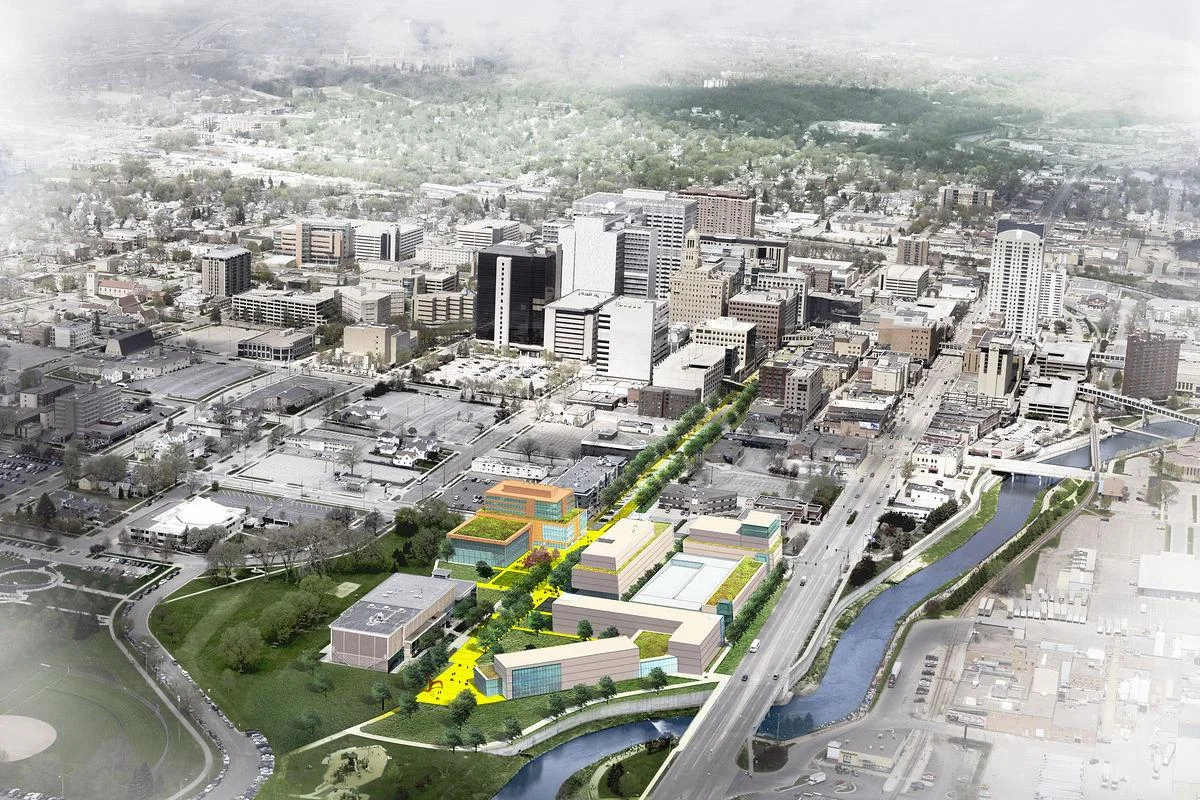Column | Talk on transportation reaches a crossroads
There's a long, bone-rattling road ahead for the redesign of Rochester's infrastructure, if the $17 million North Broadway reconstruction project is any indication.
Final design work and property acquisition for the nine-block project was approved last week by the Rochester City Council, which will allow for construction to begin next year and completion in 2020. The project, which went through a gauntlet of community meetings, was to deal with pedestrian and traffic safety issues at intersections between Civic Center Drive and Silver Lake. As first conceived, it was designed to manage speed and traffic flow, make the north "gateway to downtown" more workable for public transit, add lanes for bicycles and generally make it a more contemporary urban entry to downtown.
But late in the game, some business owners and council members questioned whether closing intersections was a good idea. There were some reasonable concerns about driveways and access to businesses. There were less reasonable, more political and ideological concerns about buses and bicycles, and whether Public Works was engaging in social engineering to change the business mix and character of the street.
In the end, the plan that was approved could be called a win-win. All intersections will remain open, with left-turn lanes instead of medians. There'll be protected bike lanes, with new sidewalks and some aesthetic touches.
But make no mistake, it was a battle for a project with fairly modest ambitions. What's going to happen when the city and DMC get moving on more transformative projects such as Second Street between Saint Marys and downtown, and DMC-driven transit changes that will require more vision and political courage?
The North Broadway project is just a phase in the reconstruction of Broadway into a "significant multi-modal gateway to downtown Rochester and the DMC Development District," made possible by the rerouting of U.S. 63. How will the redesign of Broadway through the heart of downtown proceed? Judging by North Broadway, we'll be fighting over bike lanes, room for buses and other transit, pedestrian-focused amenities and good design there as well.
The instant blowback last month when DMC's Heart of the City plans recommended moving the Gagnon fountain out of the Peace Plaza is a non-transit example of how resistant some will be to change. Just wait until bigger and more consequential decisions have to be made.
Transportation issues have only been discussed in generalities in the campaigns for mayor and city council. The keywords have been "downtown parking" and "bike lanes." In the 1st Ward race, candidates Heather Holmes and Patrick Keane have offered a few contrasting views. Holmes said on KAAL-TV last month that bike lanes aren't necessarily part of a viable transportation system, and regarding Rochester Public Transit, she said, "The reality of having an actual, feasible, frequent bus transportation system — we just don't have that."
People who depend on public transit would disagree, despite all the limitations of RPT. Keane talked on KAAL about the importance of building out the system, rather than simply putting up more parking ramps downtown.
The redesign of Broadway, Second Street and other corridors downtown, and the importance of growing public transit to accommodate Rochester's growth are vital issues, tailor-made for talk in candidate forums. Ask a question about the Integrated Transit Studies, for example, and it's pretty clear which people running for city office have done their homework.
Holmes and Keane joined me and Sean Baker, of Med City Beat, for a town hall meeting at the Waters on Mayowood last week, and mayoral candidates Kim Norton and Charlie O'Connell will join us for a similar town hall at 7 p.m. Tuesday at Little Thistle Brewing, 2031 14th St. N.W. If you want to know where Norton and O'Connell stand on transportation and transit issues, this would be a good place to find out.
R.T. Rybak, the chairman of the DMC Corp. board, has said that transportation issues are key to DMC and efforts to "grow the city," but as the North Broadway project shows, it won't be easy to achieve the imaginative, progressive changes that could make the city a national model. It will take city leaders who are genuinely interested in inclusive, people-oriented urban design, who can explain it to business leaders and the public at large, and then push hard for it.
Jay Furst is a Rochester journalist and former Post Bulletin executive editor. Send comments to jpfurst@gmail.com.
Cover graphic: Map of the North Broadway reconstruction project








